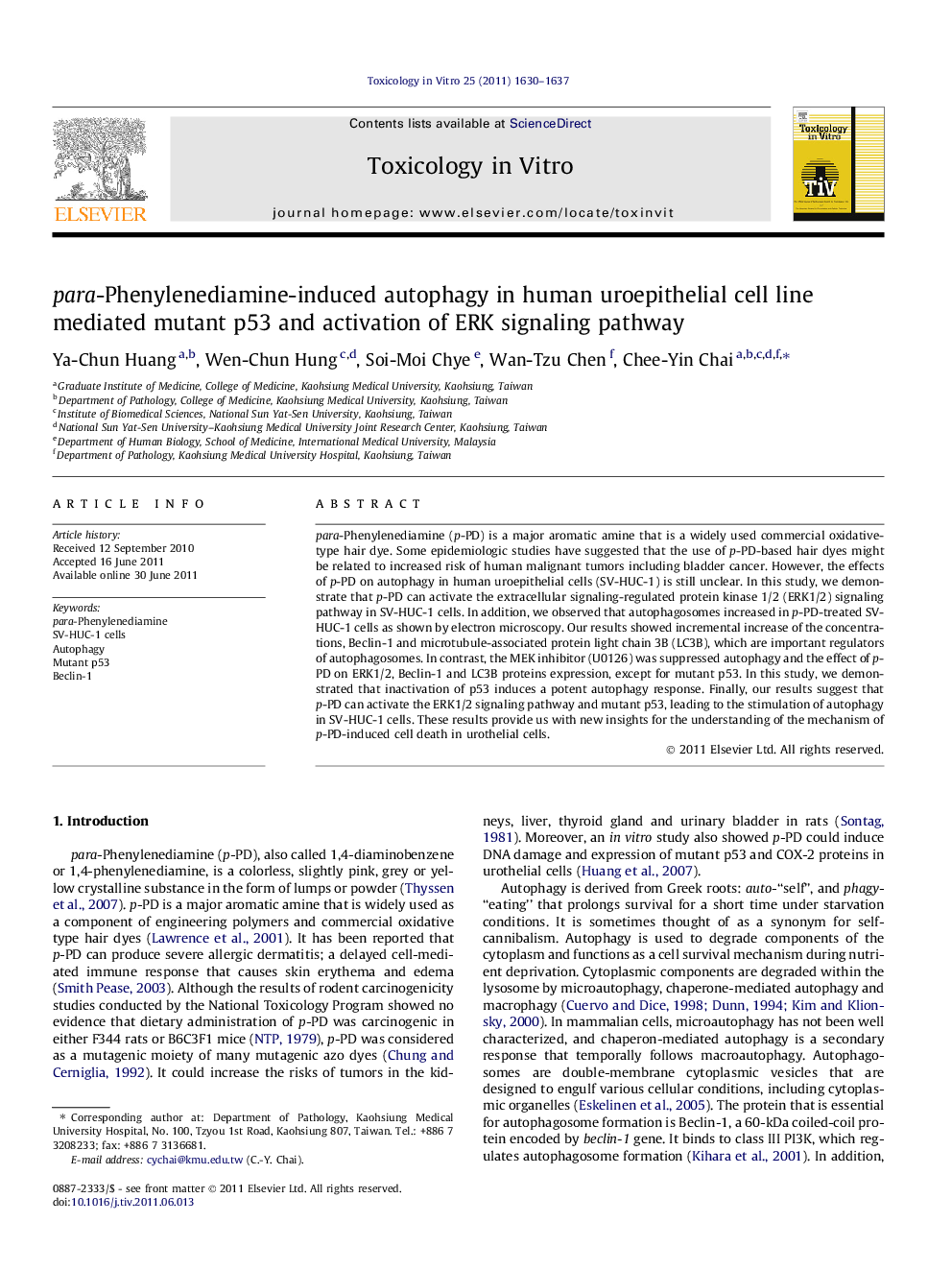| Article ID | Journal | Published Year | Pages | File Type |
|---|---|---|---|---|
| 5862602 | Toxicology in Vitro | 2011 | 8 Pages |
para-Phenylenediamine (p-PD) is a major aromatic amine that is a widely used commercial oxidative-type hair dye. Some epidemiologic studies have suggested that the use of p-PD-based hair dyes might be related to increased risk of human malignant tumors including bladder cancer. However, the effects of p-PD on autophagy in human uroepithelial cells (SV-HUC-1) is still unclear. In this study, we demonstrate that p-PD can activate the extracellular signaling-regulated protein kinase 1/2 (ERK1/2) signaling pathway in SV-HUC-1 cells. In addition, we observed that autophagosomes increased in p-PD-treated SV-HUC-1 cells as shown by electron microscopy. Our results showed incremental increase of the concentrations, Beclin-1 and microtubule-associated protein light chain 3B (LC3B), which are important regulators of autophagosomes. In contrast, the MEK inhibitor (U0126) was suppressed autophagy and the effect of p-PD on ERK1/2, Beclin-1 and LC3B proteins expression, except for mutant p53. In this study, we demonstrated that inactivation of p53 induces a potent autophagy response. Finally, our results suggest that p-PD can activate the ERK1/2 signaling pathway and mutant p53, leading to the stimulation of autophagy in SV-HUC-1 cells. These results provide us with new insights for the understanding of the mechanism of p-PD-induced cell death in urothelial cells.
⺠The p-PD increased important regulators of autophagosomes levels in SV-HUC-1 cells. ⺠The U0126 attenuated p-PD-induced ERK1/2, autophagy, Beclin-1 and LC3B expression. ⺠The p-PD can activate autophagy through the activation of ERK1/2 and mutant p53.
